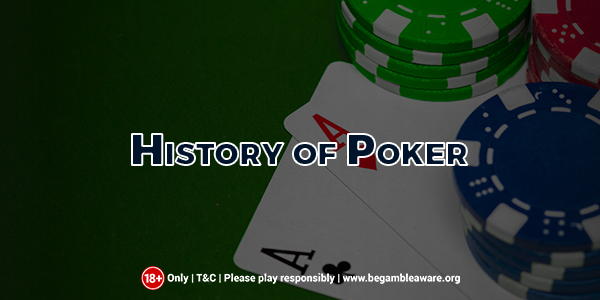
The Journey of Poker
When looking at the poker tournament strategies used these days, there is an element of surprise at how centuries-old European betting and bluffing evolved to fuse with American-style card games to create the present form of poker.
When tracing poker history and its origin, the tale can only be told by integrating games like Pochen and Brag. The currency form of poker we see today originated in America during the 1900s. The journey has come to a point where we play casino games like poker at mobile casinos and other virtual platforms.
Ancestors of Poker
Originating in northern parts of America, the game takes influence from the Persian game of As-Nas, where four players each get five cards. The game of 5-card draw poker is played without strategies like sequences or flushes. This is just one theory regarding poker history.
People also believe that the origins of poker could have happened in France and other parts of Europe. This is also true, considering the word poker closely resembles games like Poque and Poca.
Poque, also known as Poch, Pochen, or Pochspiel, is an ancestor of poker and is played using a French or German playing card along with a Poch board. Another ancestor of modern poker games is the Irish Poca.
The eighteenth-century English card game Brag is also said to have influenced poker history. Brag, a descendant of the Elizabethan game Primero, belongs to the bluffing family of card games – a long-standing relative of modern poker games.
The True History
Though it cannot be traced back to where poker originated, it does bear some resemblance to most of the card games that existed before poker began to take shape.
The poker terms used all share common literature and essential features. For example, the poker hand order in all the games is the same. In short, the hand rank decides the value of the player. The hand’s value is inversely correlated to its mathematical frequency, meaning the higher the hand rank, the more unusual the card combination.
The Game: Poker
Poker is a game played with 52 cards, and the rankings of the poker hands determine the likelihood of winning. The game begins by distributing the 52 cards among the players in a clockwise rotation. The card is distributed face-up until one of them receives the jack.
The player who receives the jack is the first dealer in the game. The dealer has to offer the shuffled card to the right to the opponent for a cut. The turn to deal and the turn to bet always pass to the left from player to player; it starts with the dealer. For each deal, any one of the players may shuffle the cards. The last person to shuffle the cards would be the dealer.
The Variance of Poker
A lot of different ways to play poker have historically existed. Let’s take a look at it.
- Draw poker
- Stud poker ( Five-card stud and Seven-card stud)
- Community-card poker (Texas hold’em)
- Three-card poker
In draw poker, each player is dealt five cards face down. The game starts from the dealer to the player on his left. The games allow one betting interval, and betting always begins with the player to the dealer’s left.
Stud poker follows a mix of face-down and face-up card strategies. Stud games, unlike draw poker, are not positional, which means the order in which the player bets can change from round to round.
A stud card game also offers many varieties, like a five-card stud, seven-card stud, Mexican stud, Caribbean stud poker, etc. Games like Five card stud were very popular during the 1920s and into the 1930s.
In community card poker games, players use commonly shared cards placed face up in the centre of the table. The group of community cards, known as the “board,” may be dealt in a straight line or set up in a particular pattern. Texas Hold ’em, is the most popular community card game that appeared in the 1920s and is still enjoyed by many.
Another popular poker variation was the three-card poker developed in 1994 by Derek Webb. The three-card poker rules include three cards for each player and the dealer. Players can fold or continue playing by making a “play” bet equal to their ante. Hands are then exposed, and wagers are resolved. The variance is also popularly known as “prime three-card poker.”